2022.10.12
DIALOGUEAmerican Scholar Revealed the Profound World of The Tale of Genji
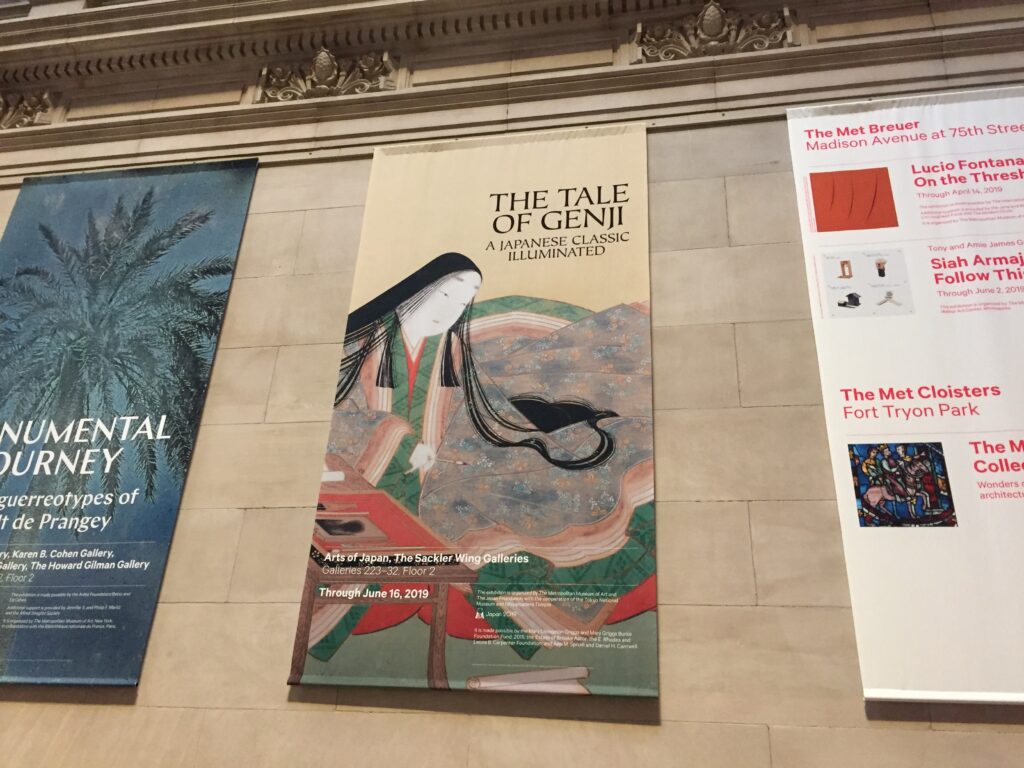
The photo at the beginning of the article shows the banner for the 2019 exhibition “The Tale of Genji: A Japanese Classic Illuminated” displayed in the main entrance hall of the Metropolitan Museum of Art.
The Japan Foundation has long supported researchers in Japanese studies around the world through a wide range of programs that bolster relations between Japan and other countries. As a result, a deeper understanding of Japan has been promoted in many different ways.
The Japan Foundation (JF) has three main focus areas: Culture, Language, and Dialogue. “Dialogue” consists of two fields: “Japanese studies” and “global partnership programs.” Since its establishment, JF has provided grants to Japanese studies researchers in other countries, in addition to organizing symposiums and collaborative projects that allow intellectuals from various countries to engage in dialogue with scholars in Japan. Promoting the creation of human networks to develop solutions to global issues is another important area of JF’s work.
JF has offered the “Japanese Studies Fellowships” program since the organization’s establishment in order to increase the number of researchers in Japanese studies overseas who strengthen mutual understanding between Japan and the rest of the world. This program provides support for preeminent foreign scholars in the field of Japanese studies to conduct research in Japan. It is available to scholars and researchers in the humanities and social sciences, as well as graduate students who are writing their doctoral dissertations. To date, nearly 7,000 researchers have traveled to Japan as fellows.
Realizing the Importance of Extra-disciplinary Research while Studying in Japan
Harvard University Professor Melissa McCormick is a two-time former JF fellow (1995 and 2013) who curated the opening exhibition for “Japan 2019,” a Japanese cultural festival held in the United States in 2019. The exhibition was titled “The Tale of Genji: A Japanese Classic Illuminated,” and was co-organized by JF and the Metropolitan Museum of Art, New York (The Met). Curated by Prof. McCormick and Dr. John T. Carpenter, Mary Griggs Burke Curator of Japanese Art at The Met, it displayed 138 objects, including two National Treasures and nine Important Cultural Properties as well as many other picture scrolls, hanging scrolls, folding screens, calligraphy, and even manga. It was the most comprehensive overseas exhibition ever held on the theme of The Tale of Genji, and was highly acclaimed by The New York Times and The Washington Post. With over 210,000 visitors, the exhibition nurtured new interest in Japan.

Prof. Melissa McCormick. Andrew W. Mellon Professor of Japanese Art and Culture, Harvard University. A leading expert on The Tale of Genji and premodern Japanese art and literature. Her work, including numerous articles on medieval emaki (picture scrolls) in both English and Japanese, has expanded the scope and methods of examining and interpreting literary artifacts. She has been a JF fellow twice, in 1995 and 2013. Photo by Martha Stewart
Prof. McCormick first became interested in The Tale of Genji as an undergraduate studying at the University of Michigan. After reading the English translation and learning about “The Tale of Genji Scroll,” she became fascinated by the intricate ways in which text (words) and pictures (images) were interrelated in Japanese art and calligraphy. In graduate school, she studied ancient Japanese and gained knowledge of Japanese cursive script (kuzushiji) and the variant kana syllabary (hentaigana). “It’s important to read the translation and get the meaning, but it’s still best to look at the oldest manuscripts, to consider what the author might have been trying to communicate and what her readers would have understood,” explained Prof. McCormick.
In 1995, she visited Japan as a JF Fellow. At the time, she was writing her doctoral dissertation, and her mentor was Professor CHINO Kaori of Gakushuin University. Prof. Chino advised her, “If you want to understand Japanese art and culture, you need to take a variety of courses including ones on architecture.” She then enrolled in a course with Professor Emeritus NISHI Kazuo of Kanagawa University, who specialized in architectural history. Prof. McCormick recalls those days: “I have fond memories of Prof. Nishi and his graduate students. Once in the deepest cold of winter, we visited a temple in Kyoto and measured the size of the paper used for the painted sliding doors (fusuma) and were given a special tour of Nijo Castle as a reward. I realized the importance of studying how Japanese painting was integrated with its environment and of engaging in fields outside of my own research area.”
Using the Fellow Experiences to Lead the Exhibition to Success
In 2013, she returned to Japan as a JF Fellow, but this time also as a professor at Harvard University. Since then, as a researcher of art history, focusing on the interrelationships between art and literature, she has taken a broader and deeper interdisciplinary approach to researching painting forms, social history, and the intention behind the creation of works of art. Prof. McCormick’s broad perspective was fully demonstrated in the 2019 exhibition “The Tale of Genji: A Japanese Classic Illuminated” at The Met.
P1012300-1024x634.jpg)
National Treasures were also exhibited at The Tale of Genji exhibition at The Met, co-curated by Prof. McCormick. Visitors looking at one such National Treasure: “The Tale of Genji, Sekiya Miotsukushi Screen” by Tawaraya Sotatsu (Seikado Bunko Art Museum collection).
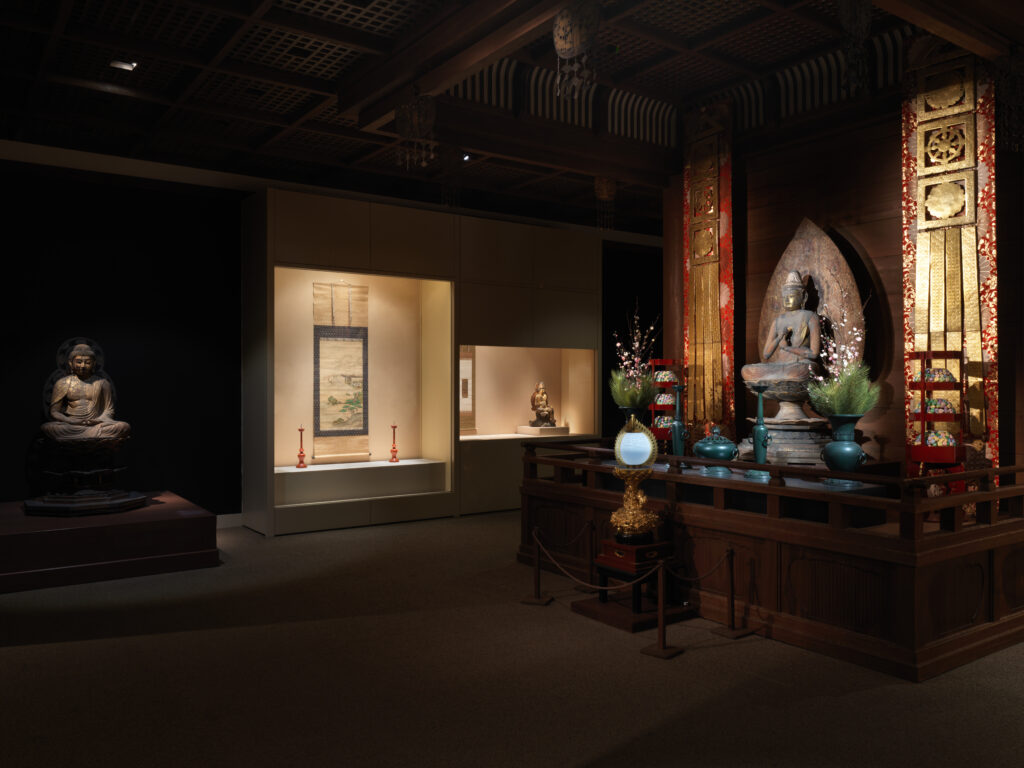
At the exhibition, visitors were greeted by a space inspired by the main hall of Ishiyamadera Temple, where Murasaki Shikibu is said to have visited and written The Tale of Genji. This multi-faceted exhibition also shed light on the religious aspects of the tale and left a deep impression on visitors. Photo: Courtesy of The Metropolitan Museum of Art/BFA.com
Prof. McCormick says: “I was happy to work with my colleagues in the U.S. and in Japan to help display 138 objects in the show, and to bring National Treasures and designated Important Cultural Properties to New York. One aim was to help museum attendees unfamiliar with The Tale of Genji understand that it is not a superficial romance. Of course, the tale hinges on elements associated with the romance genre, but its depiction of court life and political maneuvering, as well as its Buddhist worldview have had a profound impact on Japanese culture and society.”
The world of The Tale of Genji has been expressed not only in modern translations, but also in various media in Japan, such as Noh, Takarazuka performances, and animation, with various interpretations having emerged in each media format. Among them, YAMATO Waki’s manga “Asaki Yumemishi” has been especially popular and is a remarkable work of art. In the exhibition, an entire room was dedicated to Yamato’s work and to introducing her original paintings for her manga. At a talk event with Prof. McCormick held during the exhibition, Yamato was asked why she turned The Tale of Genji into a manga. “With manga, one can understand the totality of an entire page of pictures at a glance. The Tale of Genji is an extremely long novel written more than a thousand years ago with a vast number of characters. Because it is written in classical language, it takes perseverance for people today to read. But with manga, I thought I could convey the appeal of the text to many people.”
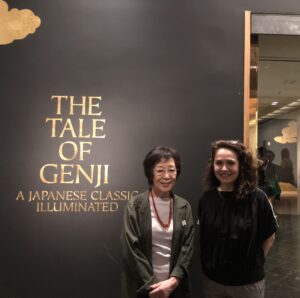
This was the first time that manga art was exhibited at The Met, but in the room where the original drawings of “Asaki Yumemishi” were displayed, many visitors spent a long time scrutinizing the details. A talk event was also held with Prof. McCormick and Yamato Waki (left).
Prof. McCormick’s deep understanding of and passion for Japan, which was strengthened through her experience as a JF fellow, made the exhibition captivating both for those who knew nothing about The Tale of Genji, and for those who knew it well. The significance of the fellowship program is to promote Japanese studies in other countries, and to increase the number of Japan experts. Furthermore, knowing the interests of these experts will help Japanese people learn about the individuality of their own country, which they may not have noticed before. It is our hope that these varied approaches to Japanese studies by scholars with diverse perspectives will further promote the appeal of Japan to the world.
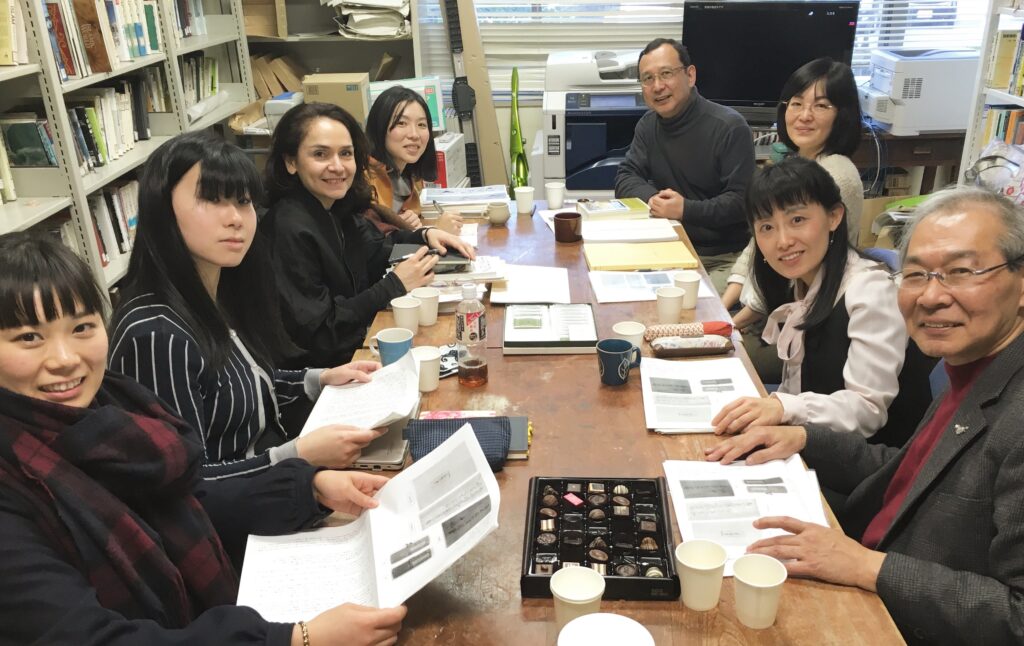
At the workshop at Nagoya University in 2016, with professors and graduate students. Anticlockwise from right: Prof. TAKAHASHI Tōru, Ms. SHIKATANI Yūko, Prof. ABE Mika, Prof. ABE Yasurō, Ms. EGUCHI Keiko, Prof. McCormick, Ms. SUEMATSU Misaki and Ms. HATTORI Yuka.
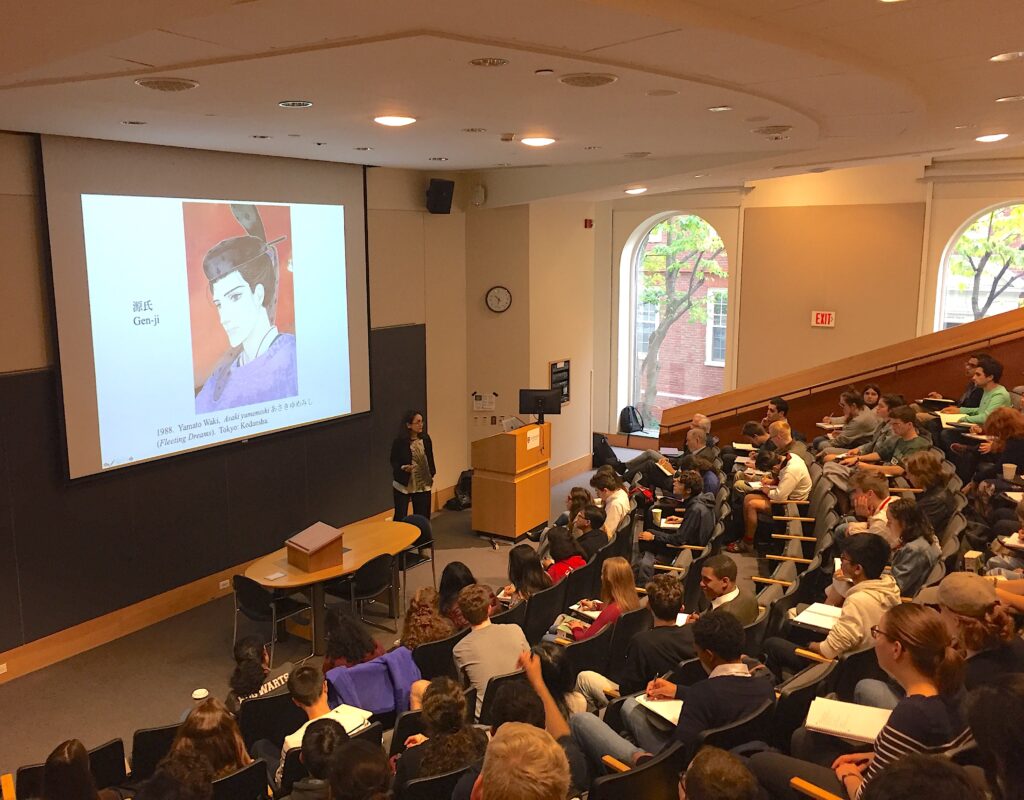
At Harvard University, Prof. McCormick teaches “Humanities 10,” a year-long course for first-year students. The class focuses on globally influential works of literature, as well as philosophy, religion and traditional culture. The works studied in the course range widely from Homer to The Tale of Genji to Virginia Woolf and W.E.B. Du Bois. ©Waki Yamato/Kodansha Ltd.
【Related pages】
Souls in Resonance, The Legacy of “Japonismes 2018”
“Shunkan,” “Antigone,” “The Cherry Orchard,”Expanding the Circle of Excitement beyond Language Barriers
Three Exhibitions Opening Up New Dimensions; Japanese Art and Architecture as Perceived by Overseas Curators
In the Footsteps of TEZUKA Osamu, the “Manga Ambassador” Who Continues to Captivate the World with His Outstanding Foresight and Creativity
Two Programs that Link Japan and the U.S., Aiming to Develop the Next Generation of Leaders
Bringing Together Hearts Around the World Through “A Wild Haruki Chase”
The Development of Ohira School into the Beijing Center for Japanese Studies, and into a Platform of Japanese Studies Open to the World
